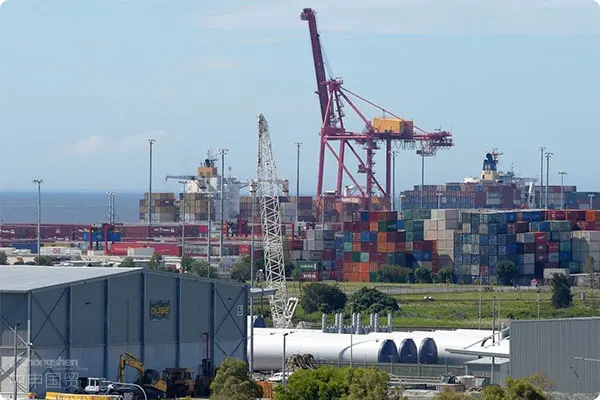- Shanghai Zhongshen International Trade Co., Ltd. - Two decades of trade agency expertise.
- Service Hotline: 139 1787 2118

Under the wave of globalized trade, exporting lighting products to Belarus has become a new focus for many lighting enterprises. Belarus, a country in Eastern Europe, has unique market demands and development potential, offering both significant opportunities and specific challenges for lighting exporters.
Opportunities in the Belarusian Market
1.1 Infrastructure Development Needs
Belarus has been actively promoting infrastructure development in recent years. The continuous urban expansion and construction of new residential and commercial buildings have created extensive demand for lighting products. Whether its chandeliers and wall lamps for illumination and decoration in public buildings, or street lighting fixtures to ensure traffic safety and urban aesthetics, there is considerable market potential for lighting exports. For instance, in the construction of new urban areas in cities like Minsk, modern lighting fixtures are indispensable elements for creating comfortable and bright living and working environments.
1.2 Growing Demand for Energy Efficiency
With increasing global attention to energy efficiency, Belarus is no exception. The government actively encourages the adoption of energy-saving lighting to reduce energy consumption. This creates favorable market opportunities for high-efficiency lighting products like LED fixtures. LED lighting, with its low power consumption and long lifespan, not only aligns with Belaruss energy policies but also helps users save significantly on electricity costs, making it widely applicable in households, commercial spaces, and industrial facilities.
Consumption upgrade trend
Belaruss economy is steadily growing, and living standards are gradually improving. This has led to a trend of consumption upgrading, with higher demands for lighting quality, design, and functionality. Lighting products with unique designs and smart features (e.g., brightness and color control via mobile apps) are increasingly popular among consumers. Major lighting producers like China continue to advance in design and manufacturing technologies, offering diverse, high-quality products to meet this demand in the Belarusian market.
II. Challenges Faced
Standards and certifications
Belarus has stringent lighting standards and certification requirements. Exported lighting products must comply with local electrical safety and electromagnetic compatibility standards. For example, rigorous testing is required for electrical insulation performance and grounding reliability. Obtaining Belarusian certifications involves time, effort, and financial investment. Companies must familiarize themselves with the certification process, prepare detailed technical documentation, and conduct product testing, which can be a significant burden for smaller lighting manufacturers.
Cultural and Aesthetic Differences
While the primary function of lighting is illumination, cultural and aesthetic factors significantly influence sales in Belarus. The countrys cultural traditions and architectural styles differ from others, and consumers have unique preferences for lighting appearance and colors. Exporters must deeply understand local cultural and aesthetic trends and adapt product designs to meet market needs. Ignoring these differences may lead to poor market performance.
Trade Policies and Logistics
Changes in international trade policies can impact lighting exports to Belarus. For instance, tariff adjustments or trade barriers may alter trade costs and market competitiveness. Additionally, Belaruss landlocked location poses logistical challenges. Lighting products require careful packaging to prevent damage during transit, and longer shipping distances with potential transshipment points can increase logistics costs and delivery times. Exporters must prepare thoroughly in logistics planning and cost control.
III. Countermeasures
Market Research and Partnerships
Lighting exporters should conduct in-depth research on the Belarusian market, including its size, demand trends, and competitors. Partnering with local distributors or agents can leverage their resources and market expertise for better product promotion. Collaborating with local businesses also helps stay updated on regulatory changes and jointly address market challenges.
Emphasis on R&D and Design
To meet Belarusian standards and market demands, companies should invest more in R&D and design. This ensures compliance with local technical standards while developing distinctive lighting products tailored to local culture and aesthetics. For example, incorporating traditional Belarusian artistic elements into lighting designs can enhance market appeal.
Optimizing Logistics and Supply Chain Management
For logistics, companies can explore optimized shipping routes and partners, reducing costs through consolidated shipments and improved packaging. Establishing a robust supply chain management system ensures timely, high-quality, and sufficient product delivery to the Belarusian market.
Exporting lighting products to Belarus offers vast potential but requires careful planning and proactive measures to address challenges. Only by deeply understanding the market, meeting standards, and adapting to cultural differences can lighting exporters succeed in Belarus and achieve mutually beneficial trade outcomes.
Related Recommendations
? 2025. All Rights Reserved. Shanghai ICP No. 2023007705-2  PSB Record: Shanghai No.31011502009912
PSB Record: Shanghai No.31011502009912










